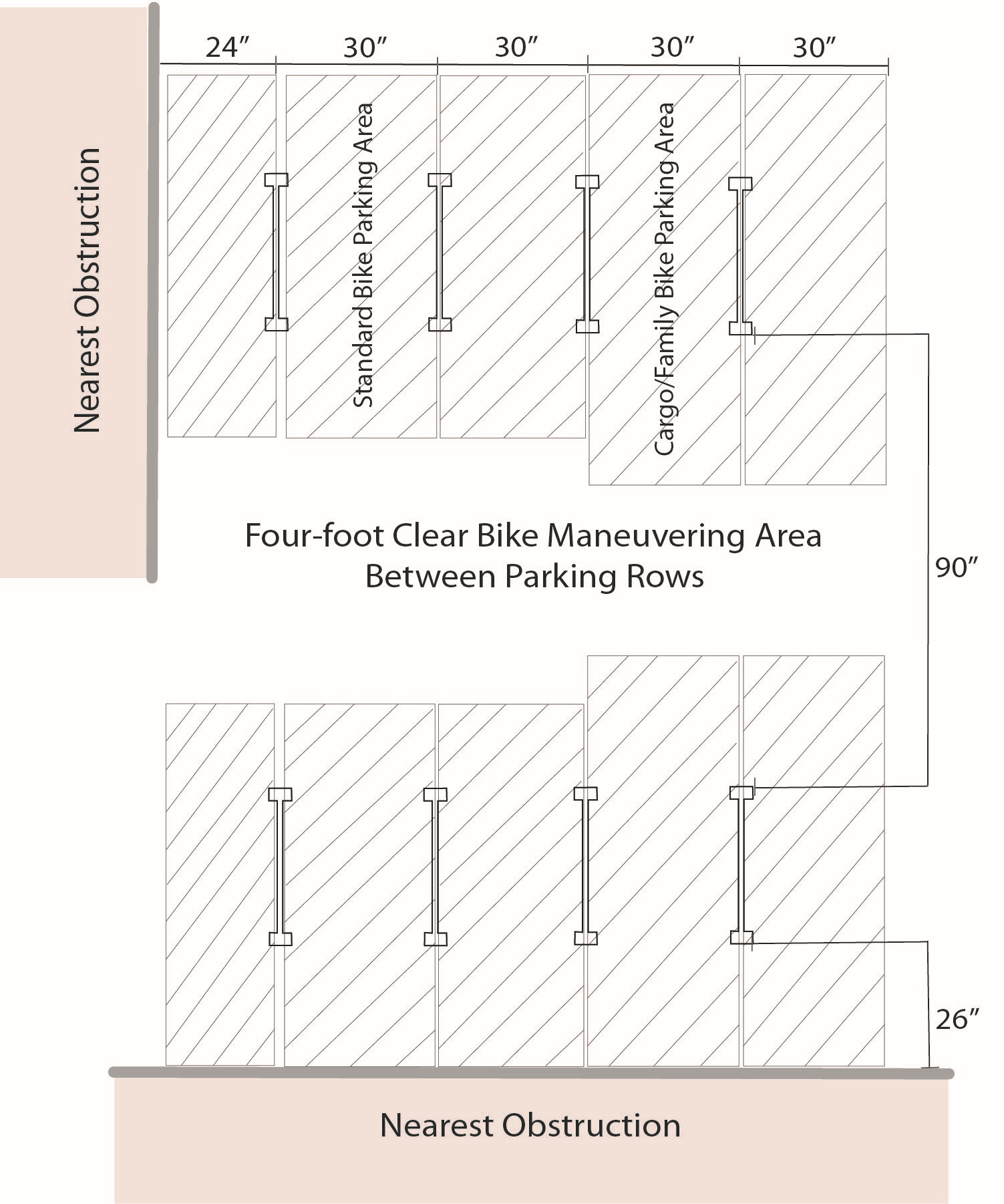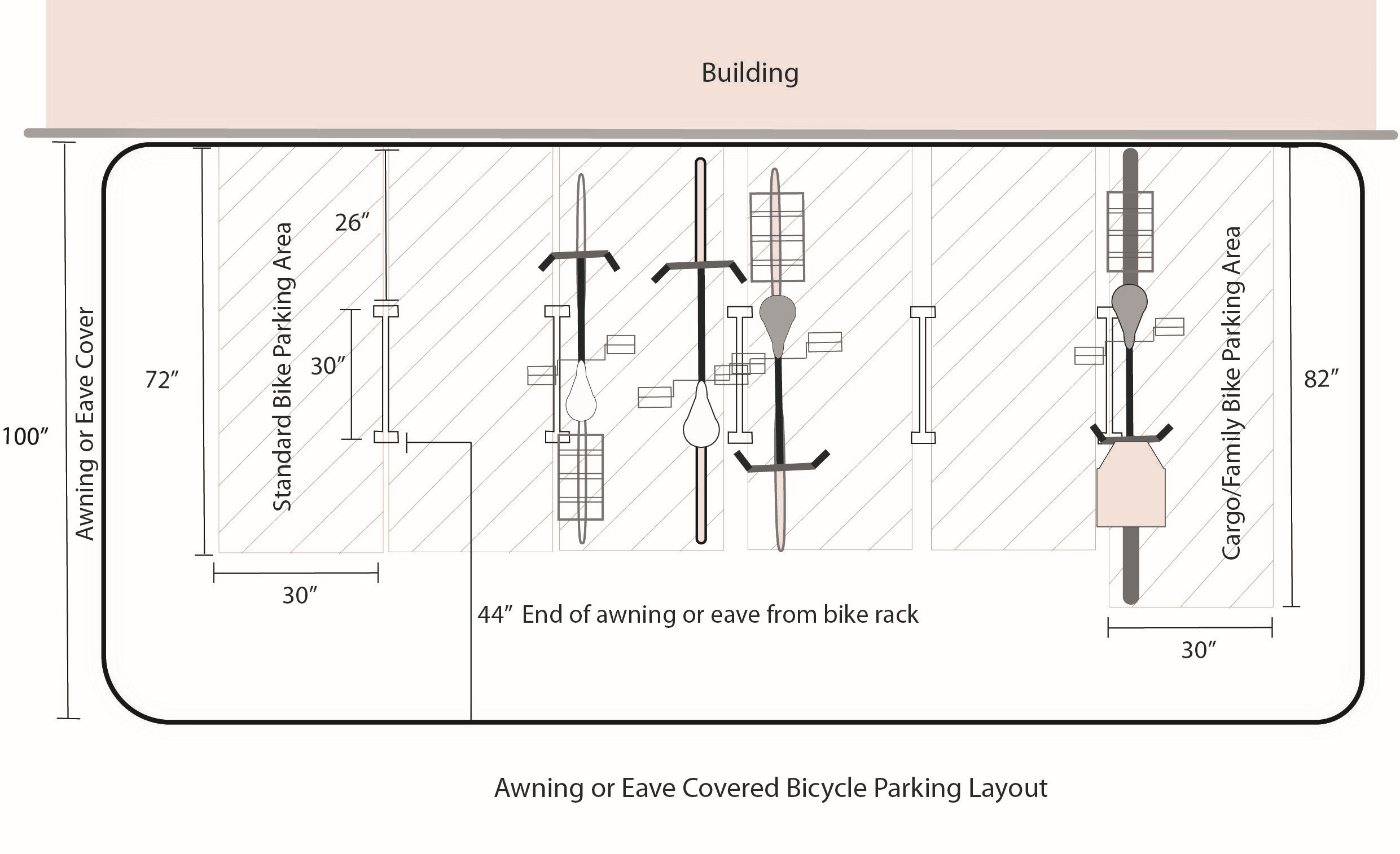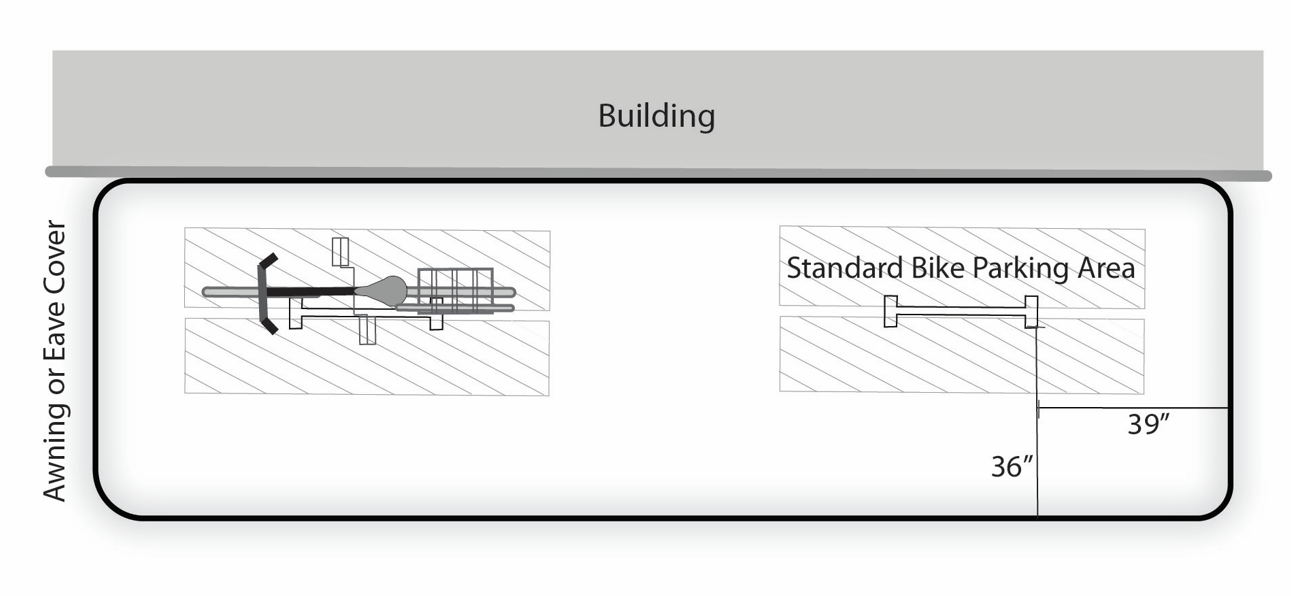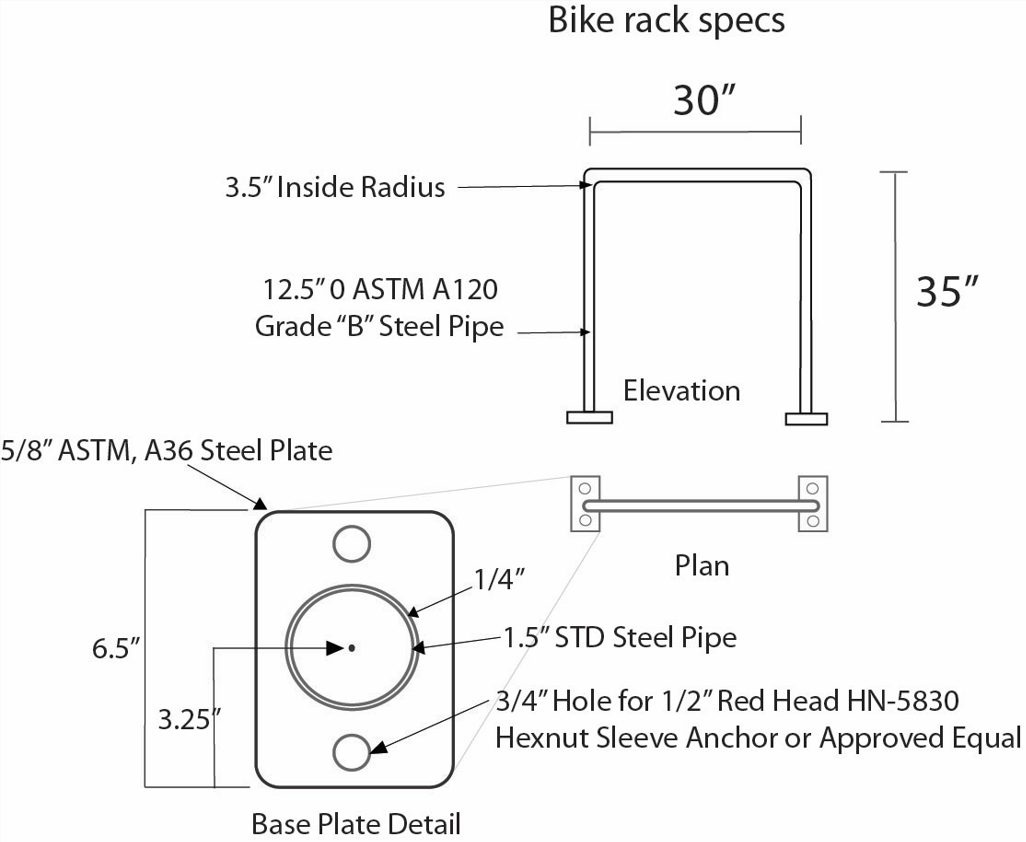18.4.3.070 Bicycle Parking Standards
A. Applicability and Minimum Requirement. All uses, with the exception of single-family residences, accessory residential units and duplexes and uses in the C-1-D zone, are required to provide the minimum bike parking spaces required in Table 18.4.3.040. The required bicycle parking shall be constructed when an existing residential building or dwelling is altered or enlarged by the addition or creation of dwelling units, or when a non-residential use is intensified by the addition of floor space, seating capacity, or change in use.
B. Bicycle Parking Design Standards.
1. Bicycle parking shall be located so that it is visible to and conveniently accessed by cyclists, and promotes security from theft and damage.
2. Bicycle parking requirements, pursuant to this section, can be met in any of the following ways:
a. Providing bicycle racks or lockers outside the main building, underneath an awning or marquee, or in an accessory parking structure.
b. Providing a bicycle storage room, bicycle lockers, or racks inside the building.
c. Providing bicycle racks on the public right-of-way, subject to review and approval by the Staff Advisor.
3. All required exterior bicycle parking shall be located on-site and within 50 feet of a regularly used building entrance and not farther from the entrance than the closest motor vehicle parking space. Bicycle parking shall have direct access to both the public right-of-way and to the main entrance of the principal use. For facilities with multiple buildings, building entrances or parking lots (such as a college), exterior bicycle parking shall be located in areas of greatest use and convenience for bicyclists.
4. Required bicycle parking spaces located outdoors shall be visible enough to provide security. Lighting shall be provided in a bicycle parking area so that all facilities are thoroughly illuminated, well-lit, and visible from adjacent walkways or motor vehicle parking lots during all hours of use.
5. Paving and Surfacing. Outdoor bicycle parking facilities shall be surfaced in the same manner as the automobile parking area or with a minimum of two-inch thickness of hard surfacing (i.e., asphalt, concrete, pavers, or similar material) and shall be relatively level. This surface will be maintained in a smooth, durable, and well-drained condition.
6. Bicycle parking located outside the building shall provide and maintain an aisle for bicycle maneuvering between each row of bicycle parking. Bicycle parking including rack installations shall conform to the minimum clearance standards as illustrated in Figure 18.4.3.070.B.6.
a. Bicycle parking must be installed in a manner to allow space for the bicycle to be maneuvered to a position where it may be secured without conflicts from other parked bicycles, walls, or other obstructions.
b. Bicycle parking should include sufficient bicycle parking spaces to accommodate large bicycles, including family and cargo bicycles.

Figure 18.4.3.070.B.6. Bike Parking Layout
7. A bicycle parking space located inside of a building for employee bike parking shall be a minimum of six feet long by three feet wide by four feet high.
8. Each required bicycle parking space shall be accessible without moving another bicycle.
9. Areas set aside for required bicycle parking shall be clearly marked and reserved for bicycle parking only.
10. Sheltered parking shall mean protected from all precipitation and must include the minimum protection coverages as illustrated in Figure 18.4.3.070.B.10.a

Figure 18.4.3.070.B.10.a. Covered Bike Parking Layout

Figure 18.4.3.070.B.10.b. Covered Bike Parking Layout
11. Bicycle parking shall be located to minimize the possibility of accidental damage to either bicycles or racks. Where needed, barriers shall be installed.
12. Bicycle parking shall not impede or create a hazard to pedestrians. They shall not be located so as to violate the vision clearance standards of section 18.2.4.040. Bicycle parking facilities should be harmonious with their environment both in color and design. Facilities should be incorporated whenever possible into building design or street furniture.
C. Bicycle Parking Rack Standards. The intent of the following standards is to ensure that required bicycle racks are designed so that bicycles may be securely locked to them without undue inconvenience and will be reasonably safeguarded from intentional or accidental damage.
1. Bicycle parking racks shall consist of staple-design or inverted-U steel racks meeting the individual rack specifications as illustrated in Figure 18.4.3.070.C.1. The Staff Advisor, in consultation with the Public Works Director, may approve alternatives to the above standards. Alternatives shall conform to all other applicable standards of this section including accommodating large bicycles, family bicycles, or cargo bicycles so they may be secured by at least two points, and providing adequate shelter and lighting.

Figure 18.4.3.070.C.1. Bicycle Parking Rack
2. Commercial bike lockers are acceptable according to manufacturer’s specifications.
3. Bicycle parking racks or lockers shall be anchored securely.
4. Bicycle racks shall hold bicycles securely by means of the frame. The frame shall be supported so that the bicycle cannot be pushed or fall to one side in a manner that will damage the wheels. Bicycle racks shall accommodate all of the following:
a. Locking the frame and both wheels to the rack with a high-security U-shaped shackle lock, if the bicyclist removes the front wheel.
b. Locking the frame and one wheel to the rack with a high-security U-shaped shackle lock, if the bicyclist leaves both wheels on the bicycle.
c. Locking the frame and both wheels to the rack with a chain or cable not longer than six feet without removal of the front wheel. (Ord. 3229 § 1, amended, 12/19/2023)